The Amélie sheet music for piano has gained immense popularity worldwide, offering pianists a chance to recreate Yann Tiersen’s captivating compositions from the iconic film.
Overview of Amélie and Its Musical Significance
The movie Amélie and its soundtrack, composed by Yann Tiersen, have become cultural phenomena, blending whimsical and emotional melodies that resonate deeply with audiences. The film’s music, featuring pieces like La Valse d’Amélie and Comptine d’un autre été, is integral to its charm, evoking a sense of nostalgia and wonder. Tiersen’s compositions, often minimalist yet intricate, have inspired pianists worldwide to explore his works. The sheet music for Amélie has gained popularity due to its accessibility for pianists of various skill levels, allowing them to bring the film’s magic to life. This music not only enhances the film’s narrative but also stands independently as a celebration of French cinematic artistry.

Importance of Sheet Music in Piano Performances
Sheet music plays a vital role in piano performances, serving as a foundation for accurate interpretation and expression. It provides pianists with detailed musical notation, ensuring precision in notes, dynamics, and tempo. For pieces like those from Amélie, sheet music preserves the composer’s intent, allowing pianists to capture the emotional depth and complexity of Yann Tiersen’s compositions. It also acts as a learning tool, enabling musicians to study and master intricate melodies and harmonies. By following the sheet music, pianists can faithfully recreate the iconic themes from the film, connecting audiences to its whimsical and nostalgic atmosphere. Thus, sheet music is indispensable for both performance and educational purposes, ensuring the music’s enduring legacy.
Why “Amélie” Sheet Music is Popular Among Pianists
The sheet music from Amélie has captured the hearts of pianists worldwide due to its unique blend of whimsical melodies and emotional depth. Pieces like “La Valse d’Amélie” and “Comptine d’un autre été” offer a perfect balance of simplicity and complexity, making them accessible yet rewarding to perform. The music’s nostalgic and cinematic quality resonates deeply, allowing pianists to connect with audiences on a personal level. Additionally, the sheet music’s availability in various arrangements caters to pianists of all skill levels, from beginners to advanced players. This adaptability, combined with the timeless charm of Yann Tiersen’s compositions, ensures the music remains a beloved choice for pianists seeking to evoke a sense of wonder and elegance in their performances.
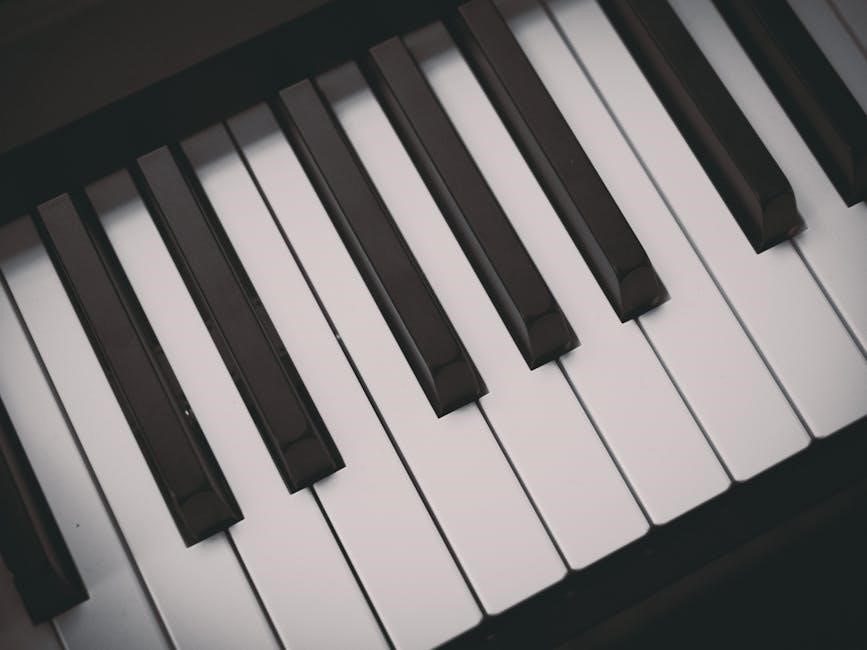
Background of the Movie and Soundtrack
Amélie, directed by Jean-Pierre Jeunet, was released in 2001 and became a global phenomenon. Its enchanting soundtrack, composed by Yann Tiersen, features a mix of accordion and piano pieces that perfectly complement the film’s quirky, romantic atmosphere, making it a timeless classic.
The Movie “Amélie” and Its Cultural Impact
Amélie, directed by Jean-Pierre Jeunet, captivated audiences worldwide with its whimsical storytelling and Audrey Tautou’s charming portrayal of the titular character. The film’s unique visual style, quirky humor, and heartfelt narrative resonated deeply, making it a cultural phenomenon. Its success transcended cinema, influencing fashion, music, and art. The character of Amélie Poulain became an icon, symbolizing charm and individuality. The movie’s impact extended to its soundtrack, which introduced Yann Tiersen’s compositions to a global audience, inspiring countless piano covers and arrangements. Today, Amélie remains a beloved classic, continuing to inspire new generations of artists and fans alike with its timeless beauty and emotional depth.
Yann Tiersen: The Composer Behind the Soundtrack
Yann Tiersen, a French composer and musician, is renowned for his evocative and minimalist style, which perfectly complements the whimsical narrative of Amélie. His compositions for the film, such as La Valse d’Amélie and Comptine d’un autre été, have become iconic, blending accordion, piano, and other instruments to create a uniquely nostalgic and enchanting atmosphere. Tiersen’s music not only enhances the film’s emotional depth but also stands independently as a celebration of French musical heritage. His work on Amélie has made his compositions highly sought after by pianists worldwide, with many arranging his pieces for solo piano. Tiersen’s ability to evoke emotion through simplicity has cemented his legacy as a masterful composer.
How the Soundtrack Complements the Film’s Narrative
Yann Tiersen’s soundtrack for Amélie is intricately woven into the film’s narrative, enhancing its whimsical and emotional depth. Pieces like La Valse d’Amélie and Comptine d’un autre été reflect the protagonist’s quirky personality and her journey of quiet introspection. The music seamlessly transitions between lighthearted and melancholic tones, mirroring Amélie’s internal world and her interactions with others. Tiersen’s compositions amplify key moments, such as Amélie’s acts of kindness or her fleeting encounters, creating a vivid emotional landscape. The minimalist yet expressive score not only complements the film’s visual charm but also deepens its storytelling, making the music an integral part of the cinematic experience. This harmonious blend of sound and narrative has made the soundtrack timeless and deeply resonant with audiences.

Structure of the Sheet Music
The Amélie sheet music is meticulously structured, featuring clear musical notation, key signatures, and tempo markings. Each piece, like La Valse d’Amélie, is arranged for solo piano with precision, ensuring a faithful representation of Yann Tiersen’s compositions while maintaining playability for pianists of various skill levels.
Understanding the Musical Notation and Layout
The Amélie sheet music for piano features a clear and organized layout, with precise musical notation that captures the essence of Yann Tiersen’s compositions. Each piece, such as La Valse d’Amélie and Comptine d’un autre été, is arranged with detailed key signatures, tempo markings, and dynamics to guide pianists. The notation includes articulations, phrasings, and pedal markings, ensuring a faithful interpretation of the original soundtrack; The PDF format provides large, readable note heads and staves, making it accessible for pianists of all levels. Additionally, some versions include suggested fingerings to help navigate complex passages, enhancing playability while maintaining the emotional depth of the music.
Key Signatures and Tempo Markings in the Score
The Amélie sheet music features a variety of key signatures and tempo markings that reflect the emotional depth of Yann Tiersen’s compositions. Pieces like La Valse d’Amélie and Comptine d’un autre été are written in keys such as C Major and E Minor, with tempo markings ranging from Moderato to Lento. These elements guide pianists in maintaining the intended mood and pacing. The score often includes dynamic contrasts, from delicate pianissimos to expressive fortes, enhancing the music’s emotional impact. The tempo markings, such as 4/4 and 3/4 time signatures, are clearly indicated, ensuring accurate interpretation. These musical details are essential for capturing the essence of Tiersen’s compositions and preserving their original charm.
Challenges in Transcribing the Music for Solo Piano
Transcribing Yann Tiersen’s music from the Amélie soundtrack for solo piano presents unique challenges. The original compositions often feature multiple instruments, requiring careful adaptation to maintain their essence on a single piano. Pianists must compensate for the absence of orchestral layers, ensuring melodies and harmonies remain distinct. The intricate interplay between themes demands precise arrangement to avoid overcrowding the score. Additionally, the emotional depth and dynamic range of the music must be preserved, posing a technical and interpretative challenge. The process of transcribing pieces like La Valse d’Amélie and Comptine d’un autre été requires a deep understanding of both the composition and the piano’s capabilities, making it a rewarding yet complex task for arrangers and performers alike.

Popular Pieces from the Soundtrack
The Amélie soundtrack features iconic pieces like La Valse d’Amélie and Comptine d’un autre été, which are widely admired for their beauty and emotional resonance, making them favorites among pianists.
“La Valse d’Amélie” – A Fan Favorite
“La Valse d’Amélie” is a captivating piece from the soundtrack, known for its whimsical and enchanting melody; Composed by Yann Tiersen, it perfectly reflects Amélie’s quirky and imaginative personality. The piece has become a staple in piano repertoire, cherished by both professionals and hobbyists; Its delicate arpeggios and flowing rhythms create a dreamlike atmosphere, making it a joy to play and listen to. Fans adore how the music transports them to the charming world of Montmartre, evoking the film’s magical essence. The sheet music is widely available, including arrangements for solo piano, allowing pianists of all levels to bring this beloved tune to life. Its enduring popularity underscores its timeless appeal and connection to the film’s iconic legacy.
“Comptine d’un autre été” – A Complex yet Beautiful Piece
“Comptine d’un autre été” is a standout piece from the Amélie soundtrack, offering a blend of complexity and beauty that challenges and inspires pianists. Composed by Yann Tiersen, it features intricate harmonies and a hauntingly delicate structure that evolves throughout the piece. The music captures a bittersweet nostalgia, making it emotionally resonant for listeners. While technically demanding, its rewarding nuances attract pianists seeking to refine their skills. The sheet music is widely available, including arrangements for solo piano, with versions ranging from intermediate to advanced levels. Its moderate tempo and layered melodies provide a rich musical experience, making it a favorite among those who appreciate both complexity and emotional depth in piano music.
“L’Autre valse d’Amélie” – A Haunting Melody
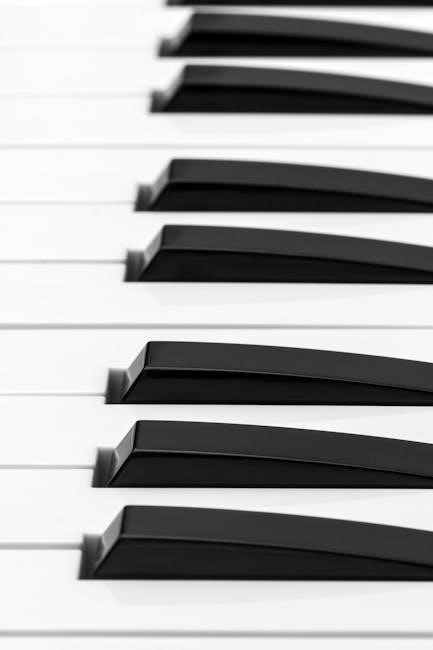
“L’Autre valse d’Amélie” is a captivating waltz from Yann Tiersen’s soundtrack, known for its melancholic yet enchanting melody. This piece offers a unique contrast to the more upbeat “La Valse d’Amélie,” with a slower tempo and deeper emotional resonance. Its intricate structure, featuring arpeggios and subtle harmonic shifts, creates a hauntingly beautiful atmosphere. Pianists appreciate the challenge of maintaining the delicate balance between the waltz rhythm and the expressive, almost ethereal quality of the melody. The sheet music is widely available, including solo piano arrangements, making it accessible to pianists of various skill levels. This piece is a testament to Tiersen’s ability to evoke profound emotion through his compositions, making it a cherished addition to the Amélie soundtrack.
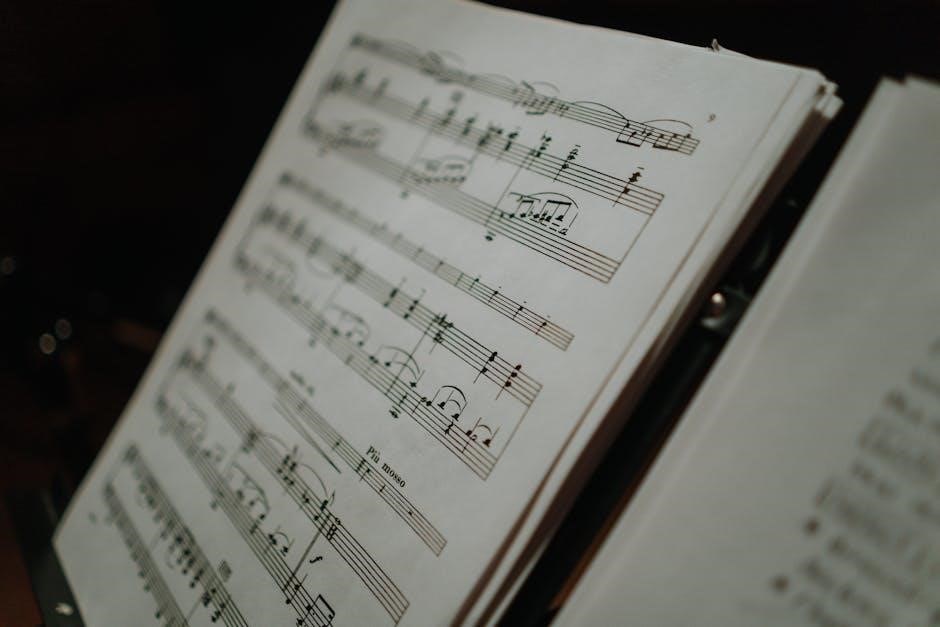
Where to Find the Sheet Music
The Amélie sheet music is widely available on platforms like Musescore and other reputable websites, offering both free and paid versions for pianists to download and enjoy.
Official Sources for Downloading the PDF
Official sheet music for Amélie can be found on reputable platforms like Musescore, where high-quality arrangements are available for download. These platforms often provide both free and paid versions, ensuring accessibility for pianists of all levels. Additionally, the composer’s official website or authorized music distributors may offer authentic PDF downloads, guaranteeing accuracy and quality. To access these, users typically need to create an account or purchase the sheet music directly. Official sources are the best way to ensure that the music is faithfully transcribed and matches the original compositions by Yann Tiersen. This makes them a reliable choice for pianists seeking to play the iconic pieces from the film accurately and authentically.
Free vs. Paid Versions: What’s the Difference?
When searching for Amélie sheet music, pianists often find both free and paid versions online. Free versions, available on platforms like Musescore, are ideal for beginners or those exploring the music. However, they may lack the full arrangement or include simplified versions of the pieces. Paid versions, typically found on official sites or music stores, offer high-quality, professionally transcribed sheet music with intricate details and accurate compositions. These paid versions are recommended for serious pianists seeking authenticity and precision. While free versions provide a starting point, paid options ensure a faithful representation of Yann Tiersen’s original work, making them worth the investment for those committed to mastering the pieces.
Websites Offering High-Quality Sheet Music
Websites Offering High-Quality Sheet Music

Several websites provide high-quality Amélie sheet music for piano, catering to both beginners and advanced pianists. Musescore stands out as a popular platform, offering a wide selection of user-contributed and professionally arranged scores. Musicnotes and Sheet Music Plus also offer authentic and detailed sheet music, ensuring accuracy and clarity. Additionally, the official Yann Tiersen website occasionally features exclusive arrangements, making it a valuable resource. These platforms often provide previews, allowing users to review the music before purchasing or downloading. For those seeking reliable sources, these websites are excellent choices, offering a seamless way to access and enjoy playing the beloved compositions from the film.

Tips for Playing Amélie’s Music
Mastering Amélie’s music requires attention to nuanced dynamics and tempo control. Start with slower tempos to build confidence, then gradually increase speed while maintaining emotional connection.
Techniques for Achieving the Right Mood
To capture the essence of Amélie’s music, focus on dynamics and phrasing. Use delicate pedaling to maintain a soft, ethereal sound, especially in pieces like “La Valse d’Amélie.” Emphasize nuanced tempo changes to convey emotion. Practice with a metronome to ensure accuracy while preserving the music’s organic feel. Pay attention to articulation—legato for flowing melodies and staccato for playful rhythms. Experiment with rubato to add expressive freedom, particularly in “Comptine d’un autre été.” Balance technical precision with emotional depth to recreate Yann Tiersen’s signature style. Start with slower tempos to build confidence, then gradually increase speed while maintaining the music’s intimate, whimsical character.
Practice Strategies for Mastering the Pieces
Mastering Amélie’s piano pieces requires a structured approach. Start by breaking down complex sections into smaller fragments, focusing on accuracy and fluidity. Slow practice is essential, especially for intricate rhythms in “Comptine d’un autre été.” Use a metronome to refine timing and gradually increase tempo. Emphasize dynamic control and phrasing to capture the music’s emotional depth. Practice hands separately before combining them to ensure clarity. Record sessions to identify areas for improvement. Incorporate mindfulness to connect with the piece’s mood. Regular, short practice sessions are more effective than lengthy ones, helping build muscle memory. Prioritize expression over perfection, as Yann Tiersen’s music thrives on emotional authenticity. Consistency and patience are key to mastering these beloved compositions.
Common Mistakes to Avoid When Playing
When performing Amélie’s piano pieces, common mistakes include rushing tempo, neglecting dynamics, and improper finger placement. Many pianists overlook the importance of a steady waltz rhythm in “La Valse d’Amélie,” leading to a lack of grace. Additionally, excessive pedaling can muddle the clarity of intricate melodies. In “Comptine d’un autre été,” failure to observe rests and accents disrupts the piece’s subtle charm. Pianists often play with too much force, losing the delicate, whimsical quality of Yann Tiersen’s compositions. Practicing hands separately before combining them ensures better coordination. Avoid overcomplicating the music; simplicity and nuance are key to capturing its essence. Mindful attention to these details will enhance the overall performance and preserve the music’s enchanting character.
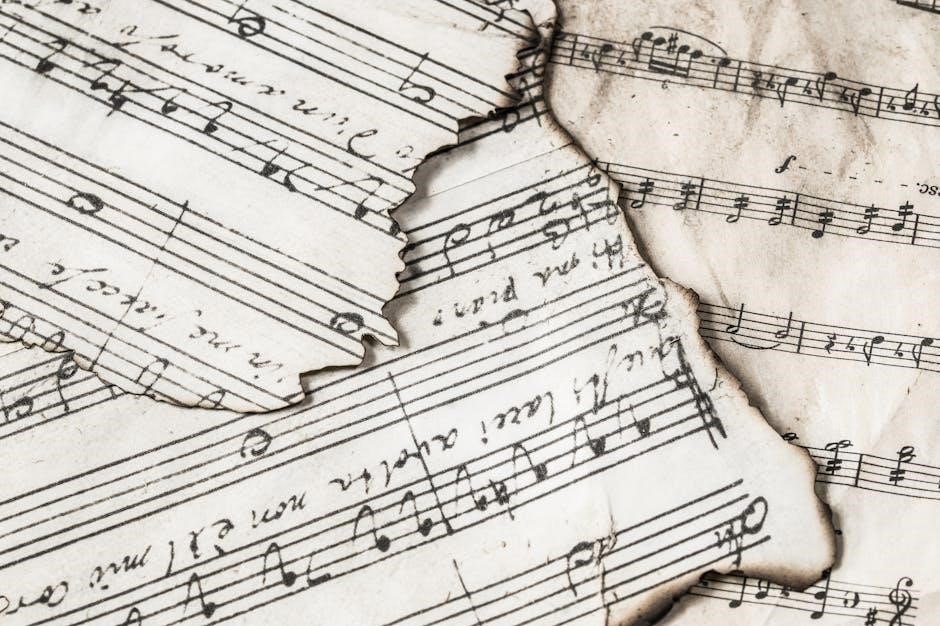
Cultural Impact and Legacy
Amélie’s piano music has left an enduring mark on modern cinema and piano culture, inspiring countless performers and preserving Yann Tiersen’s iconic soundtrack for future generations.
How the Soundtrack Influenced Modern Piano Music
Amélie’s soundtrack has profoundly influenced modern piano music, introducing a fresh wave of minimalist compositions that emphasize emotional depth. Yann Tiersen’s unique approach, blending simplicity with intricate harmonies, has inspired countless pianists to explore similar styles. The music’s ability to evoke vivid imagery and nostalgia has set a new standard for cinematic piano scores. Many contemporary composers now draw inspiration from Tiersen’s work, incorporating his techniques into their own pieces. Additionally, the widespread availability of sheet music has democratized access, allowing pianists of all levels to connect with the music. This accessibility has further cemented Amélie’s legacy, ensuring its influence continues to resonate in modern piano repertoire.
Amélie’s Music in Contemporary Performances
Amélie’s music remains a staple in contemporary performances, with pianists worldwide interpreting Yann Tiersen’s compositions in various styles. From intimate solo recitals to grand orchestral arrangements, the pieces resonate deeply with audiences. The simplicity and emotional depth of the music make it a favorite for both professional and amateur pianists. Additionally, its versatility has led to collaborations across genres, blending piano with other instruments. The music’s timeless appeal is evident in its frequent use in films, commercials, and live streams; Many artists also share their renditions on platforms like YouTube, further expanding its reach. This enduring presence ensures Amélie’s music continues to inspire and delight audiences across generations.
The Role of Sheet Music in Preserving the Soundtrack
Sheet music plays a vital role in preserving the soundtrack of Amélie, ensuring its timeless compositions remain accessible to pianists and music enthusiasts. By transcribing Yann Tiersen’s original scores, sheet music allows the soundtrack to transcend generations, maintaining its cultural and artistic significance. It serves as a bridge between the film and performers, enabling precise interpretations of the music. The availability of both free and paid versions online has further democratized access, fostering a global community of pianists who keep the music alive through their performances. This preservation ensures that Amélie’s musical legacy endures, inspiring future artists and audiences alike.
The Amélie sheet music preserves Yann Tiersen’s iconic soundtrack, offering pianists worldwide a chance to connect with its emotional depth. Its global accessibility ensures enduring inspiration for musicians and fans alike.
Final Thoughts on the Significance of the Sheet Music
The Amélie sheet music holds profound significance as a cultural symbol and artistic bridge, connecting pianists to Yann Tiersen’s timeless compositions. Its accessibility on platforms like MuseScore and its high-quality arrangements ensure that both professionals and beginners can immerse themselves in the film’s enchanting world. The sheet music not only preserves the soundtrack’s legacy but also inspires new interpretations, keeping the music alive for future generations. Its popularity endures as a testament to the film’s enduring charm and the universal language of music. Whether for personal enjoyment or public performance, the Amélie sheet music remains a cherished resource, fostering a deep connection to its audience.
Encouragement for Aspiring Pianists to Explore the Music
Aspiring pianists are encouraged to delve into the enchanting world of Amélie sheet music, as it offers a unique blend of simplicity and emotional depth. The compositions, crafted by Yann Tiersen, provide a rewarding experience for pianists of all skill levels, from beginners to advanced players. Exploring these pieces allows musicians to connect with the film’s whimsical atmosphere and convey its timeless beauty. Whether for personal enjoyment or performance, the music invites creativity and interpretation, making it a fulfilling addition to any pianist’s repertoire. Embrace the opportunity to bring this beloved soundtrack to life and share its magic with audiences worldwide.
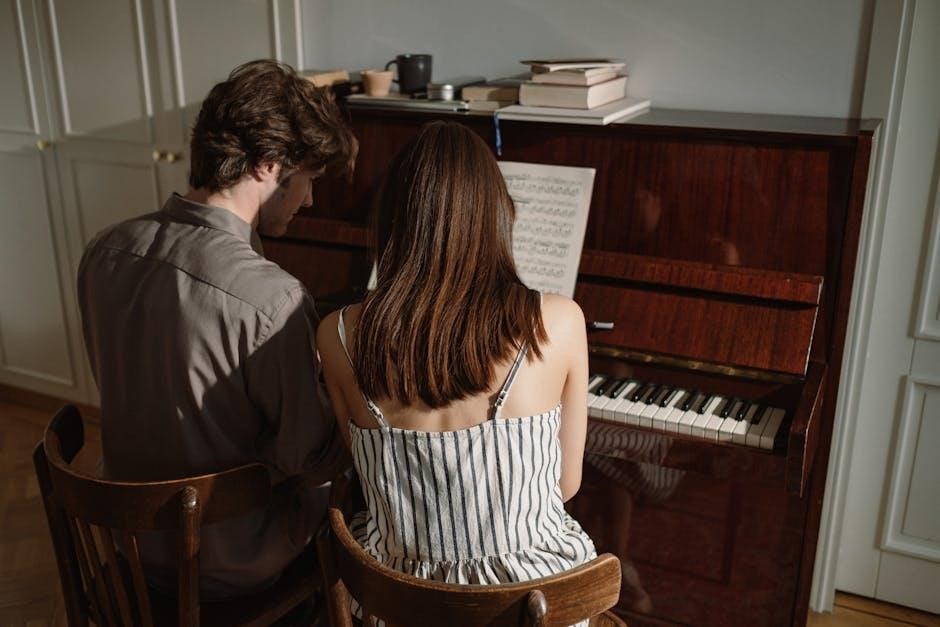
No Responses